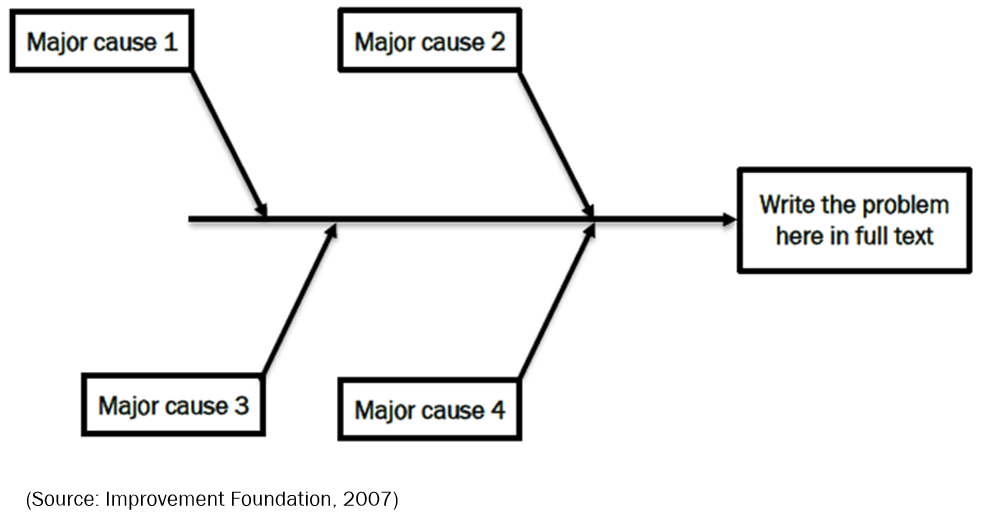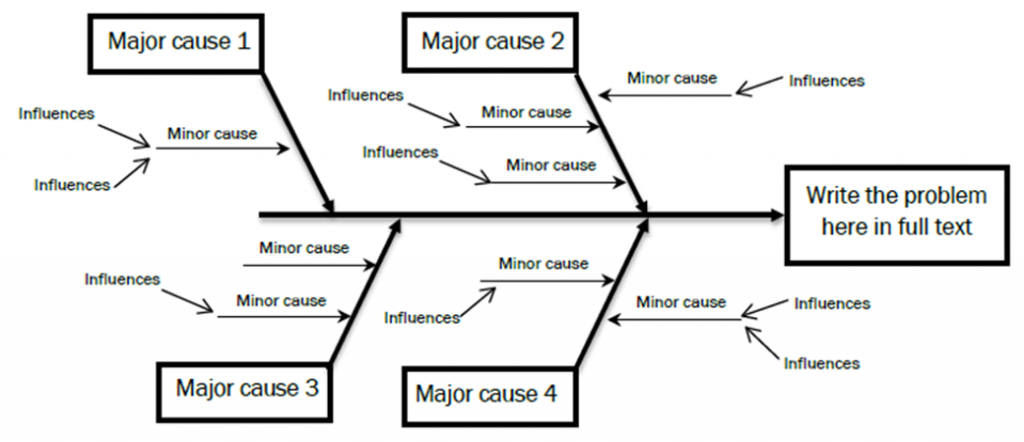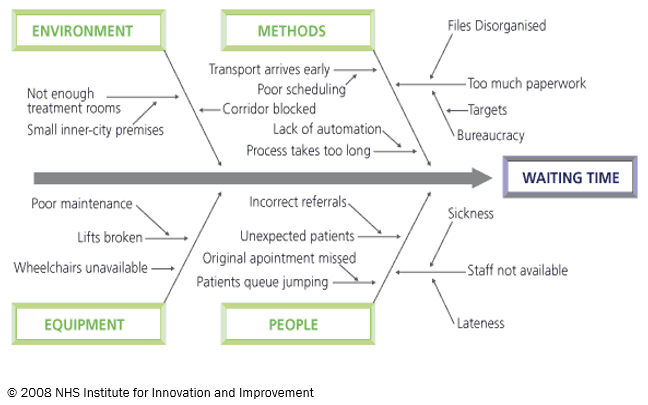Tool: Fishbone (Ishikawa) Diagram (Cause & Effect)
Usage: Exploring and determining factors that cause or influence a problem (cause and effect)
The Fishbone Diagram is a visual tool used to explore the factors that influence or cause a problem, in order to help understand the problem more clearly. The tool gets its name from its inventor, Kauro Ishikawa, and its resemblance to a fish skeleton.
The diagram helps to develop a sophisticated understanding of the problem, taking into consideration the interaction of many causes. It also helps to identify underlying causes that may require further investigation.
It is important that all team members affected by the problem take part in discussing it and constructing the diagram.
How to Construct a Fishbone Diagram
Agree on a single statement that describes the problem, including as much information as possible. Draw a box around the statement with an arrow pointing towards it:
Identify the major causes of the problem and draw these categories as ‘bones’ off the main arrow. Make sure the categories are relevant to the problem.
Take each major cause category and identify additional causes related to the issue as minor causes. These can be represented as small ‘bones’. Continue until the group has reasonably identified all causes relating to the problem.
Analyse the diagram, investigating the factors that may influence the minor causes.
Example In this example from the NHS Institute for Innovation and Improvement (UK), ‘Environment’, ‘Methods’, ‘Equipment’ and ‘People’ have been chosen as the major causes to the problem of waiting time. A range of minor causes have also been identified and illustrated as small bones in the diagram below.
Tips
- Include team members from across the organisation that may be affected by the problem, such as administration, finance, management, etc. This improves the chances of correctly identifying all causes related to the problem and also promotes ownership of the solution across the organisation.
- Spend sufficient time agreeing on the problem statement. It is important that the problem statement is articulated as accurately and as precisely as possible, as this sets the limits for the rest of the exercise.
- Be flexible in the major cause ‘bones’ that are used. There is no perfect set or number of categories, and the ‘bones’ should fit the problem rather than the other way around.
- Use a surface on which changes can easily be made (such as a whiteboard) as the group members may refine their thinking as they gain experience with the exercise. The group may like to take a photo or print the diagram afterwards to share with other team members.




